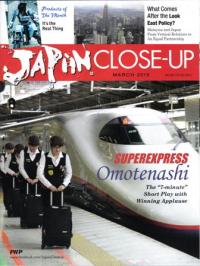Book Review: ‘Fallout: The Hiroshima cover-up and the reporter who revealed it to the world’
Not particularly just about the nuclear bomb itself the book is more about the covering up of both the immediate and ensuing adverse aftereffects of the nuclear bomb dropped on Hiroshima on the city’s inhabitants, the US Government’s and US Military’s propaganda and censorship to play these down, and the subsequent exposé by the WWII journalist, and author, John Hersey.
The book is an ‘easy’ read, not in its subject matter but in the layout and the prose and highlights the difficulties war correspondents had in overcoming the understandable, and in some cases extreme, anti-Japanese feeling during and immediately after the war which underpinned an at first lackadaisical attitude toward the bombs and their effects. This glib attitude was seemingly later replaced through, ironically, the use of Hersey’s article to educate the US Military as an adjunct to military studies, the development of strategies for the future conduct of nuclear war, and the adoption of such policies as M.A.D. (mutually assured destruction) for example.
There is a section in the book that makes reference to the Soviets though it’s not about their role in ending the war with Japan but about their reaction and response to Hersey’s report. Though tangential to the book’s main story it might have been moot to have included at least some sort of reference to the fact that Japan were already in the process of pursuing a peaceful settlement via the Soviets which the Soviets ignored and then declared war on Japan on the 8th August 1945 commencing hostilities on the 9th August. It is thought by many that this was particularly relevant and had a direct role in the decision of the USA to drop nuclear bombs on Hiroshima and Nagasaki since they wanted to speed up Japan’s surrender and to get them to surrender fully to the USA and not the Soviet Union. On top of this was the idea that the USA also dropped the bombs as an experiment to find out their effects on cities and their inhabitants.
Blume reports that it took two years and the intervention of the Authors’ League of America to get permission from MacArthur to publish the report in Japan. MacArthur asserted vociferously that reports he had blocked Hersey’s book had no basis in fact and that they stemmed from false and malicious propaganda that gave fallacious impressions that an arbitrary and vicious form of censorship existed in Japan. Though it is certain that he would have been aware of Hersey’s article and though it is unlikely it is potentially possible that MacArthur was unaware of its ban in Japan. The book, ‘The Man Who Saved Kabuki: Faubion Bowers and Theatre Censorship in Occupied Japan’ by Shiro Okamoto, is a relatively good source of information on the shenanigans and machinations of SCAP censors in Japan.
Towards the end of the book Blume provides an update on the later coverage of the six victims whose experiences he covered in his article. She goes into one in particular in detail, that of the Reverend Kiyoshi Tanamoto who, whilst on a trip to the USA in 1955, was embarrassingly ambushed by Ralph Edwards of the ‘This is Your Life’ TV programme when he thought he was going to be doing a TV interview with NBC. Having viewed the programme the comments by Hersey on the appearance and conduct of Captain Robert Lewis, the co-pilot of the Enola Gay are particularly enlightening.
What is perhaps surprising for this reviewer is the revelation that Hersey himself was subject to investigation by the FBI during the excesses of McCarthyism which, on further investigation, ironically seemed perhaps not so far removed from the Japanese Thought Police, the Shisō Keisatsu, which was established in 1911 along with its twenty-two Thought Control Offices established in 1936, both established to control Japan’s own native political groups; akin to the Gestapo or the Soviet KGB. Given the state of affairs in Eastern Europe at the time of the writing of this review Hersey’s article Hiroshima | The New Yorker of 31st August 1946 is as ever a timely reminder of the events of the past, which are still just as relevant today as they were then. Yet people still forget the tragic obscenity of nuclear war, and warmongers conveniently choose to ignore or laud it whilst sidestepping the threat of the apocalyptic consequences for the entire
human race which, since the development and dropping of the nuclear bombs on Hiroshima and Nagasaki, have never ever gone away.
Details:
‘Fallout: The Hiroshima cover-up and the reporter who revealed it to the world’
Lesley Blume
Pub. Scribe
ISBN 978-1-913348-21-2
Recommended reading:
‘Nagasaki’, Craig Collie, Portobello Books, ISBN 978-1-84627-441-1
‘Shockwave: Countdown to Hiroshima’, Stephen Walker, William Collins Books, ISBN 978-0-00-837255-2
‘AIとカラー化した写真でよみがえる戦前・戦争’ (AI to karā kashita shashin de yomigaeru senzen・sensō – Prewar / War Colorized Photos Revived with AI) (Kobunsha Shinsho) Shinsho. ISBN 978-4334044817. Profile of the books authors – https://www.nippon.com/en/japan-topics/g00966/
Recommended viewing:
Reverend Kiyoshi Tanamoto: This is Your Life, 11th May 1955https://www.youtube.com/watch/KPFXa2vTErc
‘White Light Black Rain: The Destruction of Hiroshima and Nagasaki’, HBO, DVD, ISBN 0-7831-5655-3
Reviewer Profile:
Trevor Skingle was born and lives in London where he works in the field of Humanitarian Disaster Relief. He is a Japanophile and his hobbies are Kabuki, painting and drawing and learning Japanese.
Related Posts:
Book Review: Ghosts Of The Tsunami: Death And Life In Japan’s Disaster Zone
Book Review: Where The Dead Pause And The Japanese Say Goodbye – A Journey By Marie Mutsuki Mockett
Book Review: ‘Things Remembered and Things Forgotten’ By Kyoko Nakajima
Book Review: Walking in Circles: Finding Happiness in Lost Japan. A Shikoku Memoir













